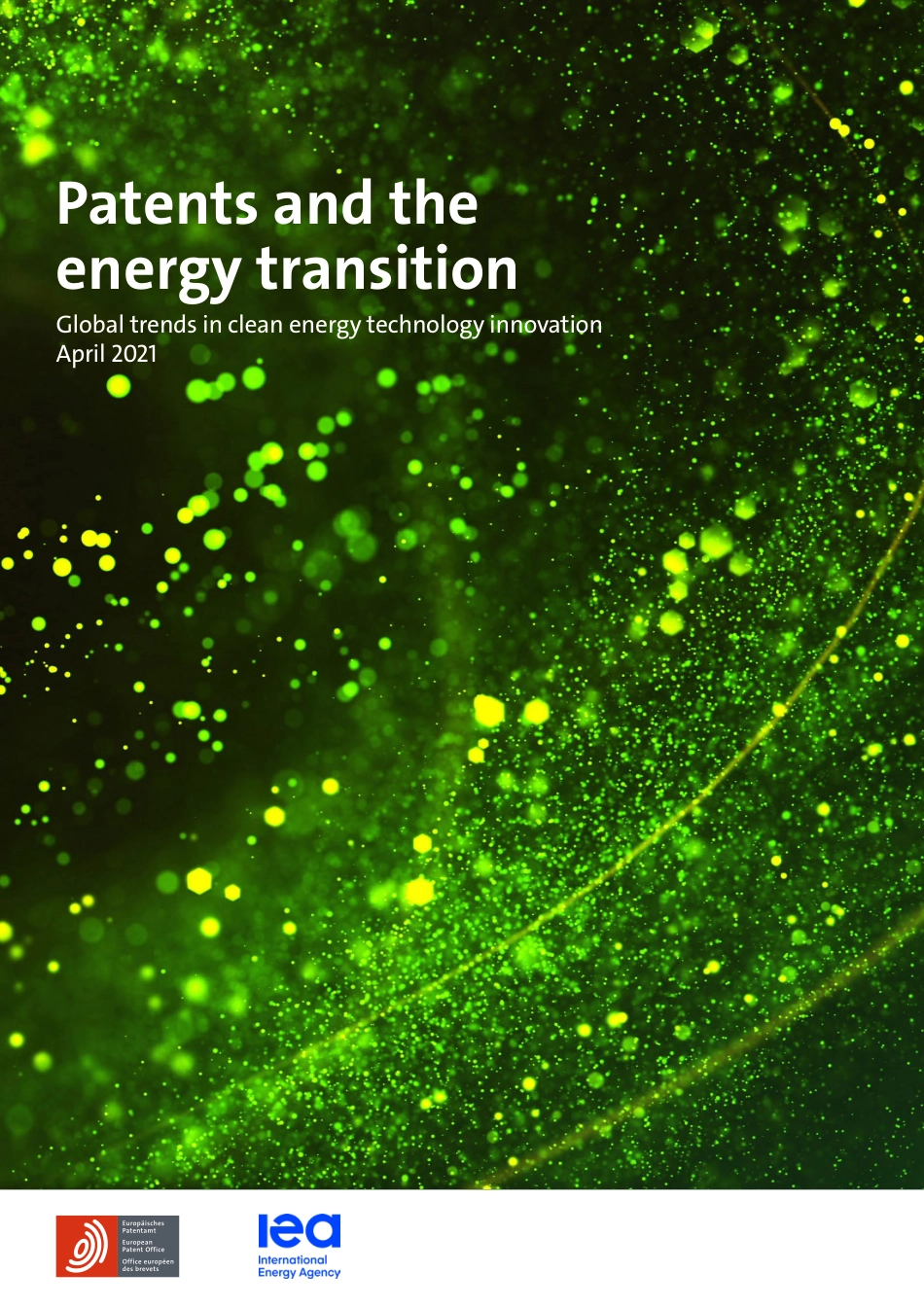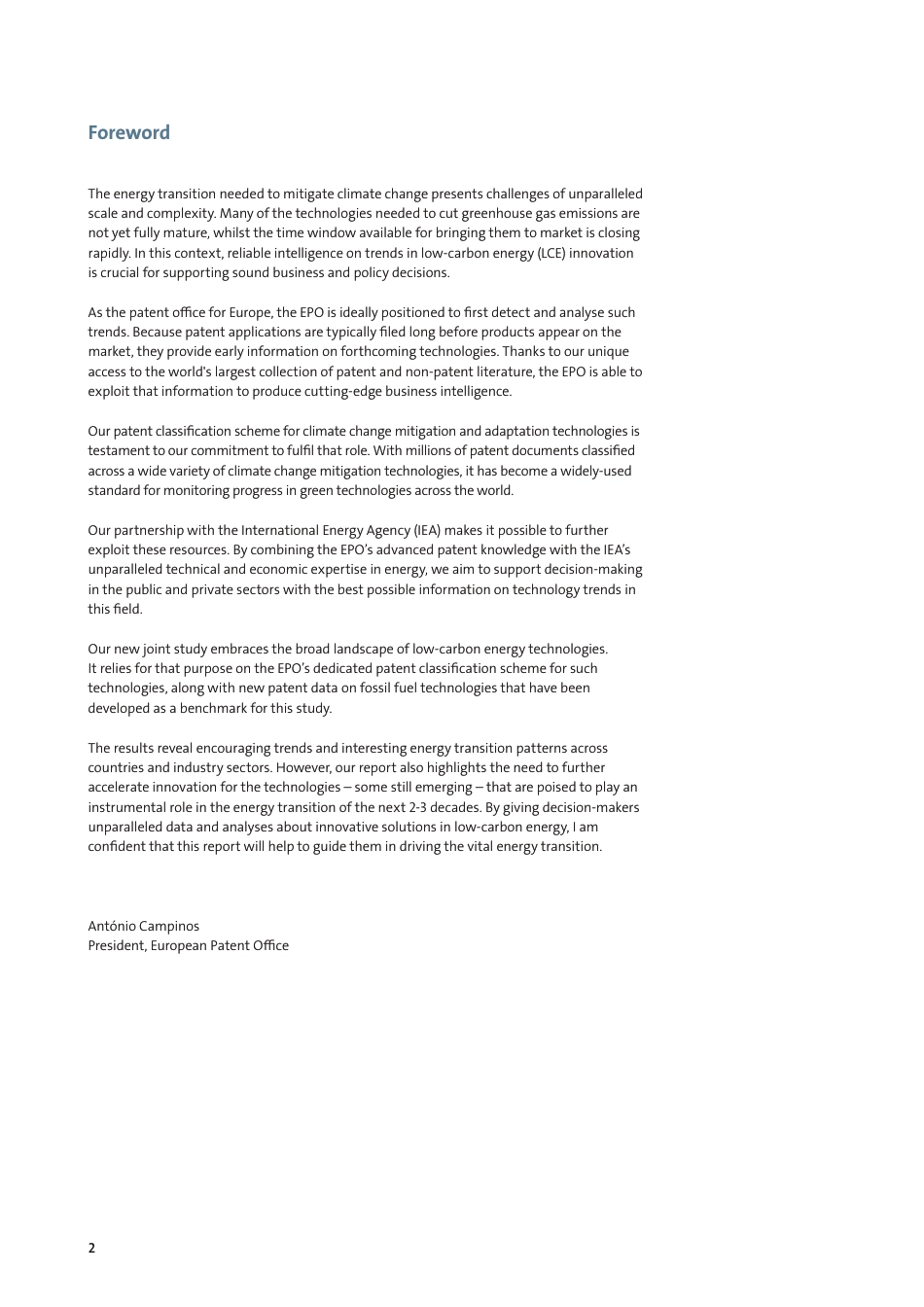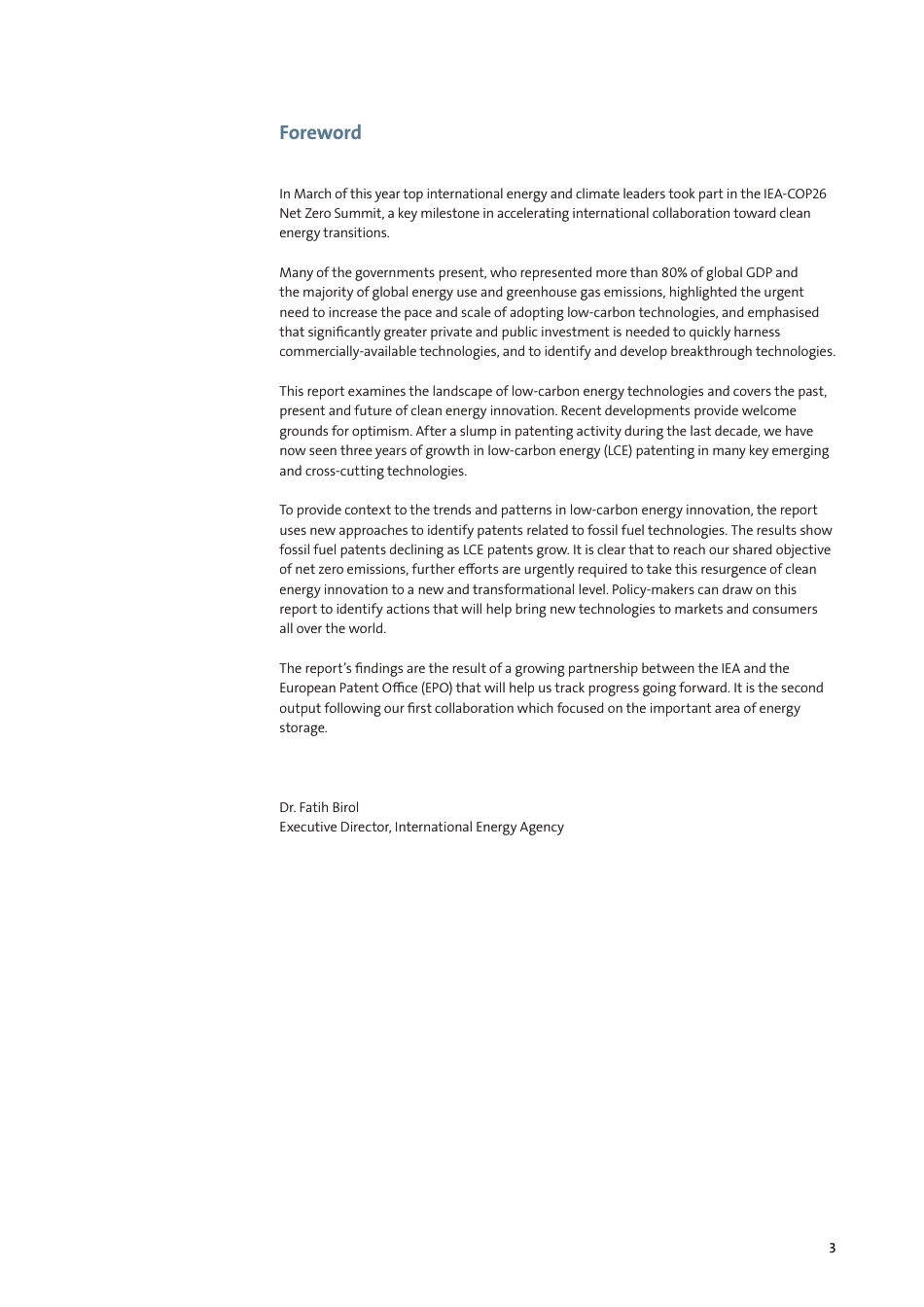Patents and the energy transitionGlobal trends in clean energy technology innovation April 20212ForewordThe energy transition needed to mitigate climate change presents challenges of unparalleled scale and complexity. Many of the technologies needed to cut greenhouse gas emissions are not yet fully mature, whilst the time window available for bringing them to market is closing rapidly. In this context, reliable intelligence on trends in low-carbon energy (LCE) innovation is crucial for supporting sound business and policy decisions.As the patent office for Europe, the EPO is ideally positioned to first detect and analyse such trends. Because patent applications are typically filed long before products appear on the market, they provide early information on forthcoming technologies. Thanks to our unique access to the world's largest collection of patent and non-patent literature, the EPO is able to exploit that information to produce cutting-edge business intelligence. Our patent classification scheme for climate change mitigation and adaptation technologies is testament to our commitment to fulfil that role. With millions of patent documents classified across a wide variety of climate change mitigation technologies, it has become a widely-used standard for monitoring progress in green technologies across the world. Our partnership with the International Energy Agency (IEA) makes it possible to further exploit these resources. By combining the EPO’s advanced patent knowledge with the IEA’s unparalleled technical and economic expertise in energy, we aim to support decision-making in the public and private sectors with the best possible information on technology trends in this field. Our new joint study embraces the ...



